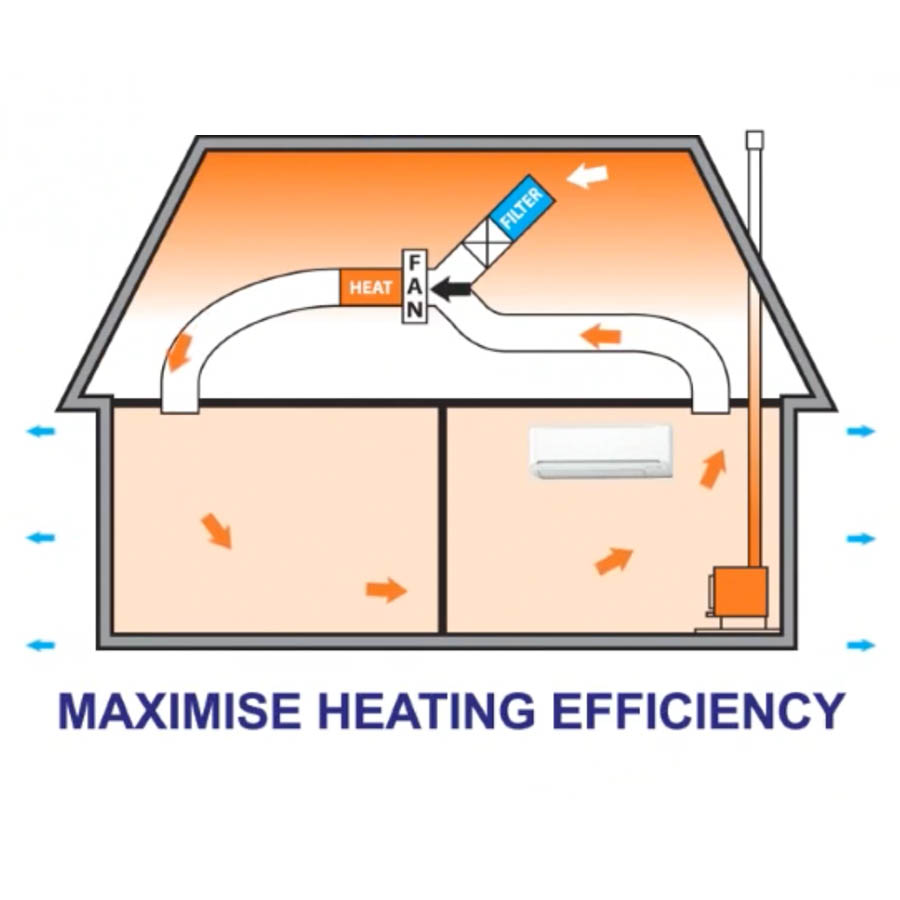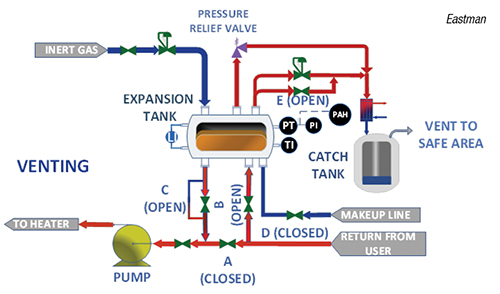How DVS Heat Transfer Systems Are Leading Sustainability Trends in Thermal Engineering
A Comprehensive Overview to Selecting the Right Heat Transfer Systems for Your Demands
Selecting the proper Heat transfer system is crucial for operational efficiency. Various systems satisfy different requirements, influenced by aspects such as temperature level variety and fluid kind. Comprehending the concepts behind Heat transfer, such as conduction, radiation, and convection, is vital. Furthermore, reviewing energy resources and upkeep techniques can impact long-lasting performance. A closer assessment of these considerations discloses how to customize a system to certain requirements. What should one prioritize in this complex decision-making process?
Recognizing Heat Transfer: Key Principles and Concepts
Although Heat transfer might look like an uncomplicated concept, it encompasses a series of principles that are basic for effective system style. Recognizing these principles is vital for designers and designers who intend to enhance thermal performance in various applications. Conduction, for circumstances, involves the transfer of Heat through solid products, while convection describes the motion of Heat within liquids. Radiation, another essential concept, describes how Heat can be moved through electro-magnetic waves. Each of these devices plays an important role in figuring out exactly how energy relocates within a system. By completely realizing these concepts, experts can make educated choices, making certain that Heat transfer systems run efficiently and satisfy the particular demands of their applications
Kinds Of Heat Transfer Systems: An Introduction
Understanding the concepts of Heat transfer lays the foundation for exploring the various kinds of Heat transfer systems available. Heat transfer systems can be classified mostly right into 3 kinds: convection, radiation, and conduction. Transmission entails Heat transfer through solid products, relying on straight get in touch with in between particles. Convection, on the various other hand, happens in fluids (gases and liquids) where the activity of the liquid itself helps with Heat transfer. Radiation entails the transfer of Heat via electro-magnetic waves and does not call for a tool, enabling it to happen in a vacuum cleaner. Each sort of system has unique attributes and applications, making it important for people and organizations to very carefully assess their details needs when picking the most appropriate Heat transfer remedy.
Applications of Heat Transfer Systems in Numerous Industries
Heat transfer systems play a necessary role across numerous industries, affecting effectiveness and product top quality. In commercial manufacturing procedures, they help with precise temperature control, while in food and drink processing, they assure security and conservation. In addition, a/c and environment control systems depend greatly on efficient Heat transfer to keep comfortable settings.
Industrial Manufacturing Processes

Many commercial manufacturing processes depend heavily on effective Heat transfer systems to maximize efficiency and boost item top quality. In sectors such as metalworking, Heat exchangers play an essential role in preserving excellent temperature levels during welding, casting, and forging. These systems guarantee uniform Heat circulation, which is vital for achieving preferred material residential or commercial properties. Likewise, in the chemical manufacturing sector, Heat transfer systems assist in specific temperature control throughout responses, affecting yield and security. Moreover, in textile manufacturing, efficient Heat management is very important for dyeing and finishing processes, influencing shade uniformity and material high quality. By picking proper Heat transfer technologies, makers can boost energy performance and lower operational costs, inevitably causing a more competitive and lasting production setting.
Food and Drink Processing
Reliable Heat transfer systems are just as crucial in the food and beverage processing industry, where keeping ideal temperatures is vital for food safety and high quality. These systems play a vital role in procedures such as pasteurization, sterilization, and food preparation, ensuring that items are safe for usage and maintain their dietary worth. Heat exchangers, for circumstances, successfully transfer Heat in between liquids, enhancing energy use while minimizing temperature changes. In addition, refrigeration systems are fundamental for maintaining perishable things and extending life span. The selection of Heat transfer innovation directly affects functional performance and item integrity, making it necessary for food and beverage producers to select the proper systems tailored to their certain handling needs. This cautious choice eventually adds to customer fulfillment and food safety.

A/c and Environment Control
While several sectors count on Heat transfer systems for efficiency, A/C (Heating, Ventilation, and Air Conditioning) plays a crucial role in keeping indoor environment control across look at here now numerous setups. These systems utilize Heat transfer concepts to regulate moisture, air, and temperature level top quality, ensuring comfort and security in property, industrial, and commercial atmospheres. Appropriately designed cooling and heating systems improve energy effectiveness, lower functional costs, and lessen ecological effect. In business buildings, for example, effective environment control adds to worker productivity and customer complete satisfaction. In commercial applications, a/c systems aid preserve optimal conditions for tools operation and item preservation. Picking the right Heat transfer system is vital for conference details climate control demands and accomplishing overall system performance.
Examining Energy Sources for Heat Transfer Solutions
In reviewing energy resources for Heat transfer systems, a contrast of eco-friendly energy options and nonrenewable fuel source factors to consider is necessary. Renewable resources, such as solar and wind, offer sustainable choices that can minimize ecological impact. Conversely, nonrenewable fuel sources stay widespread due to their recognized infrastructure and energy thickness, triggering a cautious assessment of both options.
Renewable Resource Options

Nonrenewable Fuel Source Factors To Consider
Assessing fossil fuel factors to consider is crucial for the performance and sustainability of Heat transfer systems. Fossil fuels, such as gas, oil, and coal, are traditional power resources that offer considerable Heat outcome, making them prominent choices for commercial and property applications. Nonetheless, their ecological influence, consisting of greenhouse gas emissions and source exhaustion, elevates issues. When picking a warmth transfer system, it is crucial to evaluate the availability, price, and governing variables linked with these fuels. In addition, the efficiency of nonrenewable fuel source systems should be taken into consideration, as greater performance can minimize some ecological disadvantages. Ultimately, a balanced approach evaluating efficiency and sustainability can assist decision-makers towards one of the most ideal Heat transfer solution for their certain requirements.
Factors to Think About When Picking a Warmth Transfer System
Choosing a proper Heat transfer system calls for mindful factor to consider of numerous variables that can significantly impact efficiency and efficiency. One crucial factor is the operating temperature level array, which determines the materials and design ideal for the application. Additionally, the kind of fluid utilized in the system-- whether gas or fluid-- affects Heat transfer performance and compatibility. The system's size and capacity have to straighten with the particular demands of the operation to stay clear of inadequacies. Power resource accessibility is also important, affecting operating expenses and sustainability. The installment atmosphere, consisting of area restrictions and availability for maintenance, plays a significant duty in system choice. Regulative conformity and safety standards must be considered to guarantee the system satisfies all lawful requirements.
Maintenance and Efficiency Optimization for Heat Transfer Equipments
Preserving Heat transfer systems is important for ensuring optimal effectiveness and durability. Routine upkeep activities, such as cleaning up Heat exchangers and checking insulation, aid protect against efficiency losses as a result of fouling and thermal linking. In addition, keeping an eye on system parameters, including stress and temperature level, allows for very early discovery of abnormalities, minimizing downtime and pricey repair services. Applying a preventive maintenance timetable can optimize efficiency and continue reading this expand the life-span of elements. In addition, upgrading to advanced control systems can enhance operational effectiveness by adapting to varying conditions and lots. By prioritizing maintenance and efficiency optimization, operators can this accomplish reduced energy intake, reduced functional expenses, and boosted general system integrity, eventually leading to better source usage and a much more lasting operation.
Future Patterns in Heat Transfer Technologies
As industries increasingly prioritize sustainability and power effectiveness, future trends in Heat transfer modern technologies are readied to undergo substantial transformations. Innovations such as advanced products, consisting of carbon nanotubes and nanofluids, promise improved thermal conductivity and effectiveness. Additionally, the combination of renewable resource sources into Heat transfer systems is gaining momentum, promoting green remedies. Smart modern technologies, including IoT sensors, are expected to transform monitoring and control, enabling real-time data evaluation for enhanced performance. Additionally, the development of portable and modular systems will certainly facilitate less complicated installment and maintenance, satisfying diverse applications. These improvements indicate a shift in the direction of even more lasting, effective, and adaptable Heat transfer services, straightening with worldwide power goals and environmental standards.
Frequently Asked Inquiries
What Are the Environmental Impacts of Heat Transfer Solutions?
The ecological effects of Heat transfer systems can include greenhouse gas emissions, power usage, and possible thermal contamination. Additionally, incorrect disposal of materials and inefficiencies can add to source deficiency and ecological community interruption.
How Do I Calculate the Cost-Effectiveness of a Heat Transfer System?
To determine the cost-effectiveness of a warmth transfer system, one should evaluate preliminary prices, functional expenses, maintenance needs, and energy effectiveness, contrasting these factors against the anticipated life expectancy and efficiency of the system.
Can Heat Transfer Systems Be Used in Residential Settings?
Heat transfer systems can without a doubt be made use of in household settings. They give effective home heating and cooling options, making homes a lot more comfy while potentially reducing power costs. Their convenience permits various applications in property environments.
What Safety And Security Regulations Put On Heat Transfer Solutions?
Security policies for Heat transfer systems normally include guidelines on installation, procedure, and maintenance. Conformity with neighborhood building regulations, manufacturer specifications, and industry standards is important to guarantee efficient and secure system efficiency in numerous applications.
Just How Do Different Materials Affect Heat Transfer Effectiveness?

Conduction, for instance, involves the transfer of Heat with solid products, while convection refers to the motion of Heat within liquids. Recognizing the concepts of Heat transfer lays the foundation for discovering the different kinds of Heat transfer systems offered. Heat exchangers, for instance, efficiently move Heat between liquids, maximizing energy usage while reducing temperature level fluctuations. In reviewing energy resources for Heat transfer systems, a contrast of eco-friendly energy options and fossil gas considerations is necessary. Steels, such as copper and light weight aluminum, conduct Heat successfully, whereas insulators like rubber and glass slow down Heat circulation.